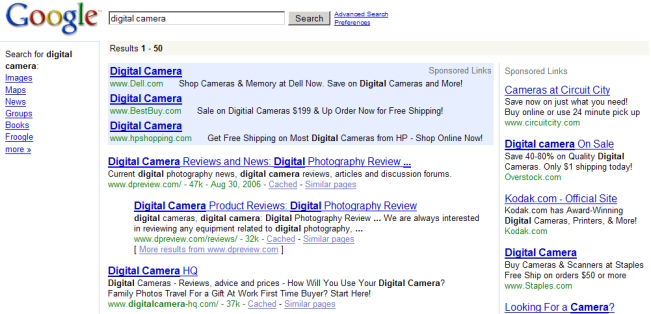Google's Vertical Search Problem and the Law of Average Users
Poor Google — all these great vertical search options, from images to maps to books to shopping, and yet the vast major of their users still default to plain vanilla Google searching. In an apparent effort to change this, Google is testing a new search results page that pushes Google’s vertical search options (see left column of screen shot):

Google’s problem with vertical search adoption (as documented by Bill Tancer at Hitwise) is a lesson on how average people adopt and use applications. Most people use Google’s main search rather than the vertical options (which are plainly listed on Google’s main page) because they see “Googling” as a simple, elegant, one-stop-shop for any and every search need — this is how most people function. Using different search engines for different types of searches is several standard deviations of complexity away from average user behavior — the people who adopted Google for its simplicity are the same people who won’t stop to think what type of Google search they need to do. They just Google search. Just one, plain, simple application.
Life is complicated. People cling to simplicity and proven results. Behaviors are deeply ingrained and do not easily change.
The law of average users tells us that most people have significant limits to the amount of variation, complexity, and nuance they can tolerate in their daily application use. Adopting a new application for one purpose is a huge hurdle. Adopting multiple applications for variations on that purpose is just too much for most people.
This is another example of the Zen of 2.0. One search application is Zen. Many search applications is not Zen.